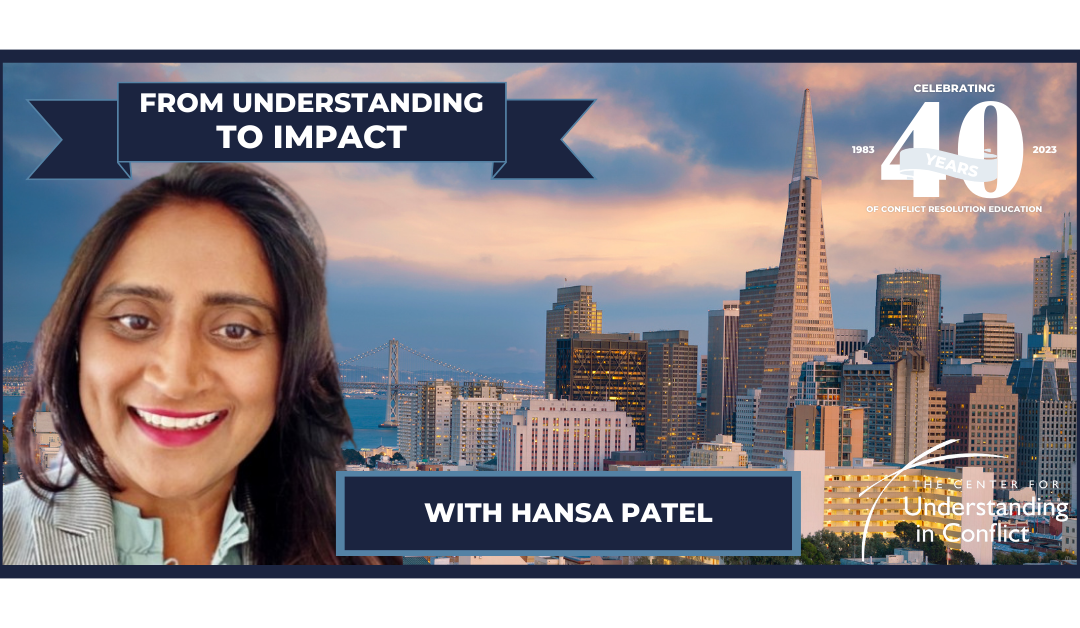Hansa Patel is an attorney, mediator, teacher, and the incoming board president at the Center for Understanding in Conflict. She was born in the United Kingdom, moved to San Francisco when she was three, and lived there her entire life before moving to Marin two years ago.
“I’m calling myself a native San Franciscan whether people like it or not,” Patel said.
After many years of litigation, juvenile dependency work, representing children in abusive or neglectful situations, and representing parents, Patel decided that she needed a different way to deal with problems and the conflict occurring in the relationships of those she was working with.
“I liked the idea of mediation or conflict resolution with both parties where they can decide how they want to move through conflict and rebuild relationships,” Patel said. “I think the judicial court system does not have a lot of room for rebuilding and maintaining them, and I wanted a different way to work with conflict.”
Previously, Patel had taken mediation training through her juvenile dependency work, where caucusing was the primary mode of resolving conflict – where the mediator or a third party would speak with both sides separately to find a potential solution.
“That just didn’t sit well with me,” Patel said. “I don’t feel like that model allows me to help people work together and face whatever is happening.”
Like many who come to the Center, Patel sought a different approach that didn’t rely on caucusing and private conversations where she was the sole holder of all the facts and information.
FINDING A NEW PATH THROUGH UNDERSTANDING
“I started looking into the programs provided by the Center,” Patel said. “I was finishing mindfulness training through another organization and heard that there were a lot of mindfulness approaches in the understanding-based model, and I was curious how that worked, how I could bring those two passions of mine together – mediation and mindfulness.”
Patel also wanted to explore how an understanding-based conflict resolution style would impact the people she worked with once she introduced mindfulness exercises during mediation sessions.
“It had a positive impact with the parties, but I felt like if there was more structure, routine, and a place for me to practice, I could have a greater impact,” Patel said. “That’s how I ended up training with the Center.”
The training experience helped Patel work through her personal and professional conflicts more meaningfully and humanely.
“I loved how it taught me to be present and engaged, to deepen my understanding and listen to people,” Patel said. “That was so powerful that I stopped practicing any other model.”
VULNERABILITY AND DIVING DEEPER
After completing the 40-hour training program and practicing with clients in the field, Patel wanted to refresh her skills while learning how to impart tools that people in conflict could keep and use to help them in their own lives.
Despite not planning to be a teacher or one who trains others to be mediators, Patel found immense value in the depth of content, monthly educational programs, and regular check-ins with trainers and fellow members of her cohort. However, what stuck with her was the importance of feedback and vulnerability.
“Being able to sit with why receiving feedback could be so uncomfortable – even good feedback – was an important part of the experience for me,” Patel said. “Another thing that is still very alive for me, and I’m working through, is how this course brought up a lot of sensitive DEIB (Diversity, Equity, Inclusion, and Belonging) issues for me. I did not anticipate that.”
Patel explained that in daily life, DEIB issues are always there in the background, and she does not always engage when they arise.
“I was always the avoider regarding DEIB issues,” Patel said. “I would go home and process it by myself or talk to friends about it but rarely address it.”
When issues arose during the Teacher Training program, the cohort was encouraged by trainers to bring thoughts and feelings to the group when they were happening.
“Something came up, and I kept hearing those words of encouragement,” Patel said. “I needed to be vulnerable and talk about what had happened.”
As part of the program, Patel felt safe to explore and talk openly, and everyone in the group didn’t have to agree, nor did they, and all approached it differently, some with a different process.
“For perhaps the first time, I felt safe talking about DEIB when challenges came up,” Patel said. “I realized I could work on this individually or collectively with the group. That was my biggest takeaway – that I can have these complicated, complex conversations safely and healthily.”
INTERNAL AWARENESS FUELS EXTERNAL GROWTH
In addition to the fundamentals of teaching adult learners, the teacher training program focused heavily on the internal and external dialogue at every level of our lives and how to use that awareness to be vulnerable with a class and become a better teacher.
“How we teach is just as important as what we feel before we teach,” Patel said. “If I am willing to acknowledge what I am feeling and be verbal and express it during the external part of teaching, it resonates with people much more. I learned to relax and be more honest to allow space for whatever I felt.”
Being vulnerable can be a potent tool for those teaching for the first time and wondering if they will get the material right.
“We often think vulnerability will make us look weak, not as well trained, or as much of an expert in what we are doing,” Patel said. “It makes us more human, and more connections can happen because we can allow the internal experience to be external and shared in the space.
One part of the teacher training program where the internal and external dialogue can be very profound is during coaching experiences.
“When somebody is struggling with a group, one of the teachers will sit down and help you unpack what you are feeling, seeing, or not seeing,” Patel said. “The program helps you work to highlight the connection between an old story in your life and what might be happening in a professional conflict situation that you might be working with, and to see the links between them.”
This moment in the process is where a participant’s life experience as an individual merges with the professional situation, either in the teaching or the mediation room. This union creates space for growth between the internal and external.
“You become whole because you can allow the internal and external to be in partnership,” Patel said. “I often kept my internal life separate while at work, and it didn’t need to be that way. I learned that they could work together and transform our personal and professional lives if we allow it to be that way, which I love about this model. You can bring your whole self to your work, and your work can come home with you to see how it might change who you are, how you live your life, and your relationships with people.”
THE POWER OF PEER SUPPORT
Throughout her training experiences at the Center, Patel participated in a peer support practice known as the buddy system, which sounds simple from the outside but is a structured, deeply connected relationship and accountability structure built into basic and advanced programs, including the Teacher Training cohort.
“It’s incredible how you can feel a powerful human connection with someone even when working online,” Patel said. “I met somebody at the last session in my buddy breakout room, and we kept connections for the following year. It is my third year now, and I still talk to this classmate at least once or twice a month, and we practice looping, building connections, listening, and understanding each other.”
During the Teacher Training program, Patel connected with another cohort member to focus on experiences with DEIB work and teaching.
“To my surprise, the buddy system also worked for that,” Patel said. “The intimacy in those conversations and the relationship we built was so meaningful. She lives across the country, but in my heart, she is there quite regularly, and that’s very powerful.”
Patel explained that the human connections at the heart of the understanding-based model, whether in conflict resolution scenarios or teaching in the classroom, are unique and uncommon in similar training programs.
“You don’t get this in your typical conference or training,” Patel said. “You don’t make these kinds of deep connections that happen because we have a lot of self-awareness and intimate conversations by design. We allow ourselves to be vulnerable in this model, and the ability to build deep connections with another human being is so much easier.”
REFLECTING ON IMPACT
After three years of engaging with the Center’s training programs, from mediation and teaching to mindfulness and then to a leadership role helping to guide others on their path, Patel reflected on the experience’s impact on her professional life.
“In the mediation room, I am more optimistic that the results are not about me,” Patel said. “I’m not so attached to the outcome of the mediation. Do I want them to reach an agreement? Each time. But I also understand that that is their journey, and I don’t have to have anything at stake in that. The conflict is genuinely theirs, and they know it best. And it is for them to decide whether or not they have an agreement, which frees you up and gives you breathing space between the conflict and your work.”
In her personal life, the understanding-based model has opened the door to deeper connections at home and with colleagues.
“It has given me a deeper connection to who I am, what I am feeling, what I am learning about myself, and what I need to learn about myself,” Patel said. “My professional relationships with my colleagues have changed. As a lawyer, it was all about our clients, what they did, what went wrong in court, and how we didn’t like the opposing counsel or the judge’s decision. It was always on the surface, but with my colleagues in conflict resolution work, it is not like that. We talk about the deeper conversation. Like how it felt when the judge made this decision, how did you think, and what biases and judgments came up for you? We talk about our personal lives and how they impact and show up in our work. And I rarely did that as a lawyer.”
Patel advises those considering the understanding-based approach to conflict resolution in their personal and professional lives to listen to intuition, and if it feels like something you want to do, do it.
“Try it on yourself and decide if this model works for you,” Patel said. “It changes you, your professional career, your relationship with colleagues, and your relationships in life; you become a better listener about yourself and with self-awareness, and you gain a better understanding of others; it is a powerful experience.”

